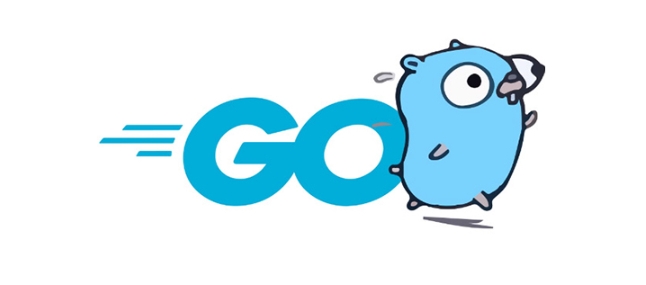The empty interface (interface{} or any) is useful because it allows handling values of any type, making it ideal for generic operations, heterogeneous data storage, and dynamic data processing; 1. It enables functions to accept any type, such as printValue(x any) printing values of varying types; 2. It supports slices or maps with mixed types, like []any{42, "hello", 3.14}; 3. Type assertions or type switches extract the underlying type when needed; 4. The alias any (Go 1.18 ) is preferred over interface{} for clarity; 5. Use it for JSON, logs, and dynamic data, but avoid it in favor of generics when possible for better type safety and performance.

In Go, the empty interface—written as interface{} (prior to Go 1.18) or more cleanly as any (from Go 1.18 onward)—is an interface that has zero methods. Because it defines no requirements, every type in Go satisfies the empty interface.

This makes the empty interface a powerful tool for writing generic or flexible code when you don't know ahead of time what type you'll be working with.
Why is it useful?
Since any type implements the empty interface (by default), you can store any value in a variable of type interface{} or any. This is especially useful for:

- Functions that accept values of any type
- Storing heterogeneous data (like in a slice or map)
- Building generic utilities before Go had proper generics
? Note: With Go 1.18 , proper generics are available, so
anyis less often the best choice for truly generic logic. But it's still widely used in APIs, reflection, and when working with JSON, logs, etc.
Example: Using interface{} / any
package main
import "fmt"
func printValue(x interface{}) {
fmt.Printf("Value: %v, Type: %T\n", x, x)
}
func main() {
printValue(42) // int
printValue("hello") // string
printValue(3.14) // float64
printValue(true) // bool
}Output:

Value: 42, Type: int Value: hello, Type: string Value: 3.14, Type: float64 Value: true, Type: bool
Here, printValue accepts any type because interface{} can hold anything.
Common use case: Slices or maps with mixed types
data := []interface{}{
42,
"hello",
3.14,
true,
map[string]int{"age": 25},
}
for _, v := range data {
fmt.Printf("Type: %T, Value: %v\n", v, v)
}This creates a slice that can hold different types. Useful for parsing JSON or dynamic data.
Type assertions: Getting the original type back
Since interface{} hides the underlying type, you often need to extract the real type using a type assertion:
func process(x interface{}) {
if str, ok := x.(string); ok {
fmt.Println("It's a string:", str)
} else if num, ok := x.(int); ok {
fmt.Println("It's an int:", num)
} else {
fmt.Println("Unknown type")
}
}Or with a switch (type switch):
func process(x interface{}) {
switch v := x.(type) {
case string:
fmt.Println("String:", v)
case int:
fmt.Println("Int:", v)
case bool:
fmt.Println("Bool:", v)
default:
fmt.Printf("Unknown type: %T\n", v)
}
}any vs interface{}
As of Go 1.18, any is an alias for interface{}:
type any = interface{}So this is equivalent:
func printValue(x any) {
fmt.Printf("Value: %v, Type: %T\n", x, x)
}Using any is now preferred—it’s shorter and clearer.
When to use it (and when not to)
? Good use cases:
- Working with JSON (
map[string]interface{}) - Logging functions that take arbitrary data
- Interfacing with external data formats
- Legacy code or APIs expecting dynamic values
? Avoid when:
- You can use generics instead (cleaner, type-safe)
- Performance matters (interface{} has boxing/unboxing cost)
- You’re building reusable libraries—prefer explicit types or generics
Basically, the empty interface is Go’s way of saying “I don’t care what type this is.” It’s flexible but should be used carefully to avoid losing Go’s type safety benefits.
The above is the detailed content of what is the empty interface in go by example. For more information, please follow other related articles on the PHP Chinese website!

Hot AI Tools

Undress AI Tool
Undress images for free

Undresser.AI Undress
AI-powered app for creating realistic nude photos

AI Clothes Remover
Online AI tool for removing clothes from photos.

Clothoff.io
AI clothes remover

Video Face Swap
Swap faces in any video effortlessly with our completely free AI face swap tool!

Hot Article

Hot Tools

Notepad++7.3.1
Easy-to-use and free code editor

SublimeText3 Chinese version
Chinese version, very easy to use

Zend Studio 13.0.1
Powerful PHP integrated development environment

Dreamweaver CS6
Visual web development tools

SublimeText3 Mac version
God-level code editing software (SublimeText3)

Hot Topics
 Strategies for Integrating Golang Services with Existing Python Infrastructure
Jul 02, 2025 pm 04:39 PM
Strategies for Integrating Golang Services with Existing Python Infrastructure
Jul 02, 2025 pm 04:39 PM
TointegrateGolangserviceswithexistingPythoninfrastructure,useRESTAPIsorgRPCforinter-servicecommunication,allowingGoandPythonappstointeractseamlesslythroughstandardizedprotocols.1.UseRESTAPIs(viaframeworkslikeGininGoandFlaskinPython)orgRPC(withProtoco
 Understanding the Performance Differences Between Golang and Python for Web APIs
Jul 03, 2025 am 02:40 AM
Understanding the Performance Differences Between Golang and Python for Web APIs
Jul 03, 2025 am 02:40 AM
Golangofferssuperiorperformance,nativeconcurrencyviagoroutines,andefficientresourceusage,makingitidealforhigh-traffic,low-latencyAPIs;2.Python,whileslowerduetointerpretationandtheGIL,provideseasierdevelopment,arichecosystem,andisbettersuitedforI/O-bo
 Is golang frontend or backend
Jul 08, 2025 am 01:44 AM
Is golang frontend or backend
Jul 08, 2025 am 01:44 AM
Golang is mainly used for back-end development, but it can also play an indirect role in the front-end field. Its design goals focus on high-performance, concurrent processing and system-level programming, and are suitable for building back-end applications such as API servers, microservices, distributed systems, database operations and CLI tools. Although Golang is not the mainstream language for web front-end, it can be compiled into JavaScript through GopherJS, run on WebAssembly through TinyGo, or generate HTML pages with a template engine to participate in front-end development. However, modern front-end development still needs to rely on JavaScript/TypeScript and its ecosystem. Therefore, Golang is more suitable for the technology stack selection with high-performance backend as the core.
 How to install Go
Jul 09, 2025 am 02:37 AM
How to install Go
Jul 09, 2025 am 02:37 AM
The key to installing Go is to select the correct version, configure environment variables, and verify the installation. 1. Go to the official website to download the installation package of the corresponding system. Windows uses .msi files, macOS uses .pkg files, Linux uses .tar.gz files and unzip them to /usr/local directory; 2. Configure environment variables, edit ~/.bashrc or ~/.zshrc in Linux/macOS to add PATH and GOPATH, and Windows set PATH to Go in the system properties; 3. Use the government command to verify the installation, and run the test program hello.go to confirm that the compilation and execution are normal. PATH settings and loops throughout the process
 Resource Consumption (CPU/Memory) Benchmarks for Typical Golang vs Python Web Services
Jul 03, 2025 am 02:38 AM
Resource Consumption (CPU/Memory) Benchmarks for Typical Golang vs Python Web Services
Jul 03, 2025 am 02:38 AM
Golang usually consumes less CPU and memory than Python when building web services. 1. Golang's goroutine model is efficient in scheduling, has strong concurrent request processing capabilities, and has lower CPU usage; 2. Go is compiled into native code, does not rely on virtual machines during runtime, and has smaller memory usage; 3. Python has greater CPU and memory overhead in concurrent scenarios due to GIL and interpretation execution mechanism; 4. Although Python has high development efficiency and rich ecosystem, it consumes a high resource, which is suitable for scenarios with low concurrency requirements.
 How to build a GraphQL API in golang
Jul 08, 2025 am 01:03 AM
How to build a GraphQL API in golang
Jul 08, 2025 am 01:03 AM
To build a GraphQLAPI in Go, it is recommended to use the gqlgen library to improve development efficiency. 1. First select the appropriate library, such as gqlgen, which supports automatic code generation based on schema; 2. Then define GraphQLschema, describe the API structure and query portal, such as defining Post types and query methods; 3. Then initialize the project and generate basic code to implement business logic in resolver; 4. Finally, connect GraphQLhandler to HTTPserver and test the API through the built-in Playground. Notes include field naming specifications, error handling, performance optimization and security settings to ensure project maintenance
 Choosing a Microservice Framework: KitEx/GoMicro vs Python Flask/FastAPI Approaches
Jul 02, 2025 pm 03:33 PM
Choosing a Microservice Framework: KitEx/GoMicro vs Python Flask/FastAPI Approaches
Jul 02, 2025 pm 03:33 PM
The choice of microservice framework should be determined based on project requirements, team technology stack and performance expectations. 1. Given the high performance requirements, KitEx or GoMicro of Go is given priority, especially KitEx is suitable for complex service governance and large-scale systems; 2. FastAPI or Flask of Python is more flexible in rapid development and iteration scenarios, suitable for small teams and MVP projects; 3. The team's skill stack directly affects the selection cost, and if there is already Go accumulation, it will continue to be more efficient. The Python team's rash conversion to Go may affect efficiency; 4. The Go framework is more mature in the service governance ecosystem, suitable for medium and large systems that need to connect with advanced functions in the future; 5. A hybrid architecture can be adopted according to the module, without having to stick to a single language or framework.
 Go sync.WaitGroup example
Jul 09, 2025 am 01:48 AM
Go sync.WaitGroup example
Jul 09, 2025 am 01:48 AM
sync.WaitGroup is used to wait for a group of goroutines to complete the task. Its core is to work together through three methods: Add, Done, and Wait. 1.Add(n) Set the number of goroutines to wait; 2.Done() is called at the end of each goroutine, and the count is reduced by one; 3.Wait() blocks the main coroutine until all tasks are completed. When using it, please note: Add should be called outside the goroutine, avoid duplicate Wait, and be sure to ensure that Don is called. It is recommended to use it with defer. It is common in concurrent crawling of web pages, batch data processing and other scenarios, and can effectively control the concurrency process.






